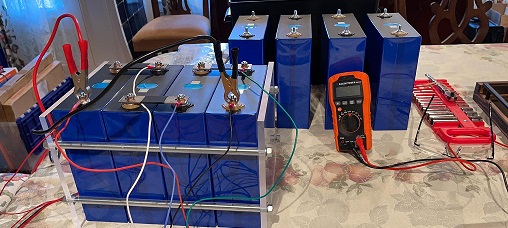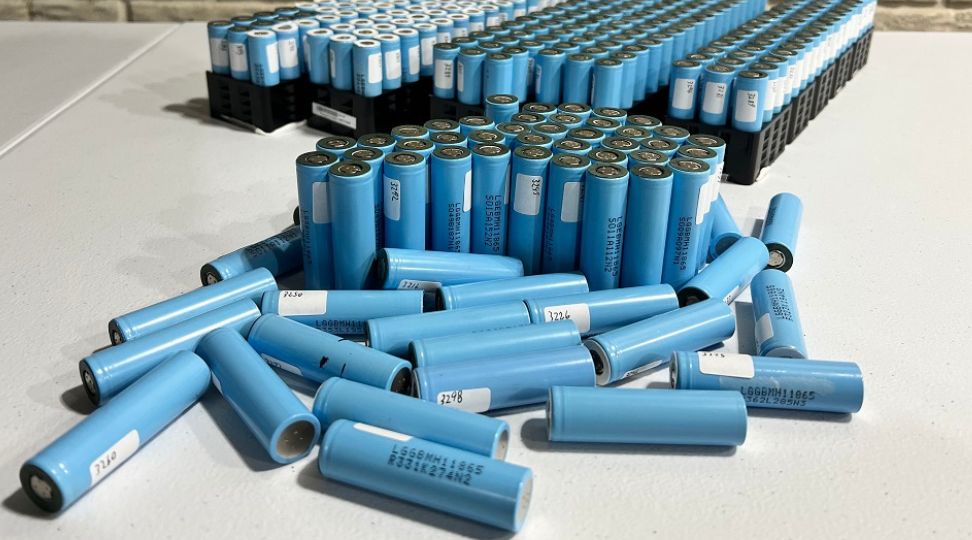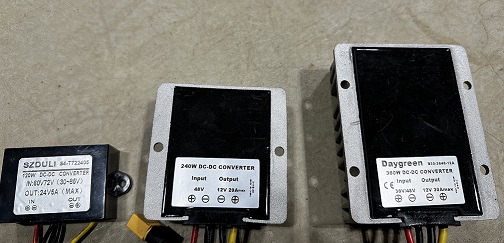
Can a Car Alternator Charge a Lithium-ion Battery?
Table of Contents
Yes, an alternator can charge a lithium-ion battery, but if a regulator is not used, optimal performance will be impossible to achieve and battery lifespan will be reduced.
Lithium-ion batteries require 2 phases for proper charging. Constant current and then constant voltage. An alternator is just a constant voltage device. There is a regulator built into the alternator to keep the DC voltage at a certain level, but the alternator has no control over the current. This means that the alternator will give as much current as you ask from it.
If there is no constant current regulator between the alternator and the battery, the battery will be charged in a totally unpredictable and unregulated manner. This can cause damage to the battery, damage to the alternator, and even cause a fire. If your power cables are loose, damaged, or simply improperly sized for the amount of current running through them, they will heat up. In a worst-case scenario, they could catch on fire. This is because lithium-ion batteries have an extremely low internal resistance, unlike lead-acid batteries.
So if you leave the electrical in your car on for a considerable amount of time and it causes the battery voltage to drop, when you turn your car on, the alternator will have to charge that battery and it's going to take a tremendous amount of current. It could overheat your alternator and other things if there is no current limiting device between the alternator and the battery.
[[ aff type=aff ~ link=https://amzn.to/3W6z1Ve ~ title=`DC to DC Lithium Battery Charger` ~ image=https://admin.cellsaviors.com/storage/dc-dc-lithium-battery-charger.jpg ~ description=`This is the best way to charge a lithium battery off of a car alternator and battery. Easy to use and very low cost!` ~ height=small ~ buttonText=`Check Price` ]]
Charging A Lithium Ion Battery With An Alternator Seems To Work, Though
The battery will indeed charge. Just not properly or safely. There's a large group of people that totally ignore this advice, and they disagree with it. They replace their lead-acid batteries with lithium batteries. They start their car, it works fine and they don't have any issues right away. So, they assume that everything's okay. But the things mentioned earlier in this article are definitely at play and in the worst-case scenario, it's only a matter of time before something goes wrong. In the best-case scenario, you will never get the full battery performance due to the improper charging cycle.
To do things the wrong way in the best possible way, people that attach lithium-ion batteries directly to their alternators typically play the game of matching battery size to alternator size and upgrading the alternator so it can handle it. And that is a brute-force approach, and that's definitely not the right way of doing things.
An alternator provides more than enough power to charge a DIY lithium-ion battery, but it is not set up on its own by default to be able to properly charge a lithium-ion battery. This might keep unexpected heat events low, but it's still not properly charging the battery.
This will only work with a 4S LFP battery. That’s because it's the only configuration that matches the voltage curve of a lead acid battery close enough to not immediately cause any major issues. In any other configuration or chemistry, this setup would not work at all.
In contrast, the closest you can come to this range with NMC chemistry would be a 3S battery. NMC cells have a fully charged voltage of 4.2 volts and a dead voltage of around 2.5 volts. This means a 3S battery will have a voltage range of 12.6 volts to about 7.5 volts. This range is not close enough to work in a car without a regulator.
One method to get around this is to use a 4S NMC battery and simply never fully charge it. A 4S NMC battery has a running voltage of 16.8 volts to around 10.4 volts. This is sometimes referred to as a 3.5S configuration. It will work, but you would be missing out on a lot of capacity. The thing is, though, it’s better for battery health so you will get more cycles out of the lithium battery. So, a 3.5S configuration is reasonable if you have the budget that allows you to pay for more battery capacity than you will be able to use.
Can An Alternator Fully Charge A Lithium Battery?
No, and in two ways. The first way involves the voltage. LFP cells have a max charge voltage of 3.7V and a dead voltage of about 2.5 volts. Putting cells in series adds their voltages, so if you have 4 of those cells in series, you will get a full charge voltage of 14.8 volts and a dead voltage of around 10 volts. This is close enough to work with a vehicle alternator, but because alternators run up to about 14.5 volts, it means you will never reach full charge voltage.
The second way involves the charge cycle and is much more important. Lithium-ion batteries are designed to charge with a constant current charge cycle. Charging a lithium-ion battery with an inconsistent amount of current prevents all of the magic from happening inside the cell and makes for a much less efficient charging process.
It gets even worse, though. Charging a lithium-ion battery with constant voltage is actually bad for the battery. The constant voltage phase is required for normal lithium-ion charging, but only as a safety mechanism to prevent overcharging the battery. The constant voltage charging phase is responsible for the lion's share of the damage that is inflicted on the cell during charging.
A common solution to this is every so often charging the battery pack through a DIY lithium battery charger or through a CC/CV bench power supply. Doing an occasional full charge of the pack helps maintain life and will help to keep the battery pack In balance.



